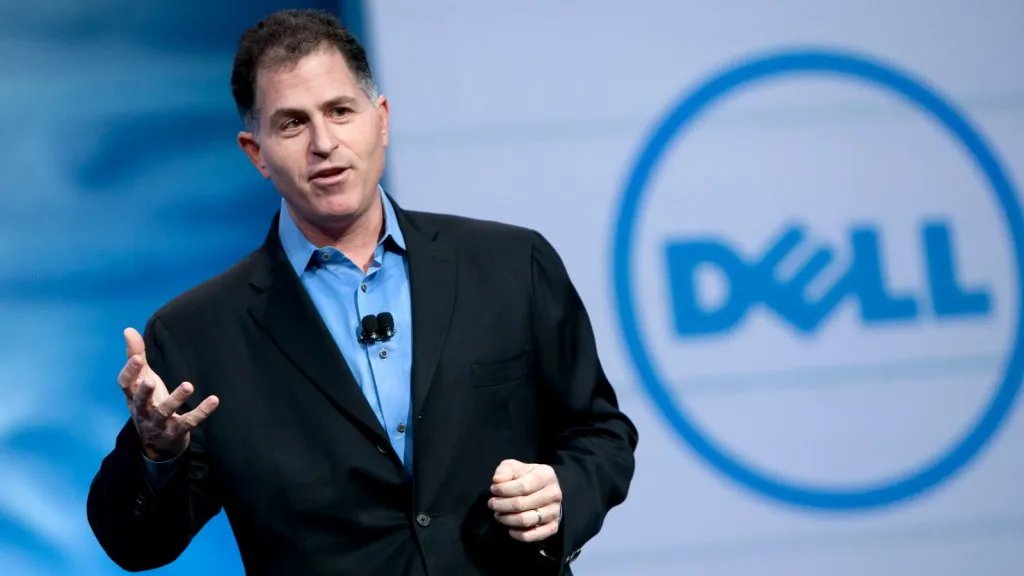Michael Dell capitalized on IBM’s early mistakes and built a $100b revenue empire.
Here’s how he did it:
Here’s how he did it:
It was 1984, and Michael had just started medical school.
IBM had released the first PC, and he was obsessed with it.
After tearing it apart and upgrading it, he smelled an opportunity.
He told his parents he& #39;d drop out "because I can do this better"
IBM had released the first PC, and he was obsessed with it.
After tearing it apart and upgrading it, he smelled an opportunity.
He told his parents he& #39;d drop out "because I can do this better"
His teardown revealed three major flaws:
1) The resellers were car salesmen, they knew nothing about PCs
2) The PC specs didn& #39;t meet market needs and were overpriced
3) IBM took ages to bring the latest tech to market
And so, PC& #39;s Limited was born using his paper route savings
1) The resellers were car salesmen, they knew nothing about PCs
2) The PC specs didn& #39;t meet market needs and were overpriced
3) IBM took ages to bring the latest tech to market
And so, PC& #39;s Limited was born using his paper route savings
Michael built the business model around the flaws he observed:
1) He would sell direct to consumers
2) Offer high degrees of customization
3) Apply Toyota& #39;s just in time principles to inventory
Here& #39;s how he did it:
1) He would sell direct to consumers
2) Offer high degrees of customization
3) Apply Toyota& #39;s just in time principles to inventory
Here& #39;s how he did it:
Because Michael was a nerd, he understood his early customers.
Through local ads & cold-calling, he secured his first few deals with local government and the University of Texas.
He sold to them in person or on the phone, cutting out the middle man.
Through local ads & cold-calling, he secured his first few deals with local government and the University of Texas.
He sold to them in person or on the phone, cutting out the middle man.
As business picked up steam, Michael pioneered what is now known as online direct-to-consumer (DTC) eCommerce.
In 1996, Dell launched direct sales to consumers on its website.
Seven months after launching, they did $1M in sales per day.
Today, that has grown to $275M. Per day!
In 1996, Dell launched direct sales to consumers on its website.
Seven months after launching, they did $1M in sales per day.
Today, that has grown to $275M. Per day!
Dell& #39;s tech-savvy customers wanted to configure a computer tailored for their use.
Michael listened and offered customization from the get-go.
Dell built the computer after receiving the order - now known as built-to-order (BTO).
Michael listened and offered customization from the get-go.
Dell built the computer after receiving the order - now known as built-to-order (BTO).
To build what he sold, he now needed millions of different parts.
Lacking cash for inventory, Michael looked at Toyota& #39;s just-in-time model for inspiration.
He took the idea and secured industry-first deals with suppliers like Intel and Seagate.
Lacking cash for inventory, Michael looked at Toyota& #39;s just-in-time model for inspiration.
He took the idea and secured industry-first deals with suppliers like Intel and Seagate.
This allowed him to buy the parts that he needed, when he needed them.
He& #39;d make daily orders after collecting the day& #39;s sales, and have the parts the next morning.
It allowed Dell to keep stock levels at a minimum, and ensured he could always offer the latest technology.
He& #39;d make daily orders after collecting the day& #39;s sales, and have the parts the next morning.
It allowed Dell to keep stock levels at a minimum, and ensured he could always offer the latest technology.
Today, Dell is known throughout the industry as a leader in operational efficiency.
Rumor has it that Dell forecasts up to 80% of its orders correct.
Imagine what that would do for your business...
Rumor has it that Dell forecasts up to 80% of its orders correct.
Imagine what that would do for your business...
When adding these three elements, you get the holy grail of consumer goods:
Faster, better, and cheaper than the competition.
It also allowed Dell to collect money before it paid its bills, known as a negative cash conversion cycle.
Combined, it& #39;s rocket fuel for growth.
Faster, better, and cheaper than the competition.
It also allowed Dell to collect money before it paid its bills, known as a negative cash conversion cycle.
Combined, it& #39;s rocket fuel for growth.
Dell continued to grow explosively and went public in 1988.
In just four years, Michael& #39;s dorm room hobby had grown to a company valued at $85 million.
Michael became a millionaire, at the ripe age of 23.
In just four years, Michael& #39;s dorm room hobby had grown to a company valued at $85 million.
Michael became a millionaire, at the ripe age of 23.
Dell& #39;s story shows that there is opportunity everywhere.
Michael deeply understood his customers.
He observed the competition and saw their flaws.
And he took action.
Michael deeply understood his customers.
He observed the competition and saw their flaws.
And he took action.
Enjoyed that?
1. Give me @polak_jasper a follow. I write about building profitable businesses primed for scale.
2. Retweet the tweet below so many more can enjoy it with you! https://twitter.com/polak_jasper/status/1525808263006146562">https://twitter.com/polak_jas...
1. Give me @polak_jasper a follow. I write about building profitable businesses primed for scale.
2. Retweet the tweet below so many more can enjoy it with you! https://twitter.com/polak_jasper/status/1525808263006146562">https://twitter.com/polak_jas...

 Read on Twitter
Read on Twitter


